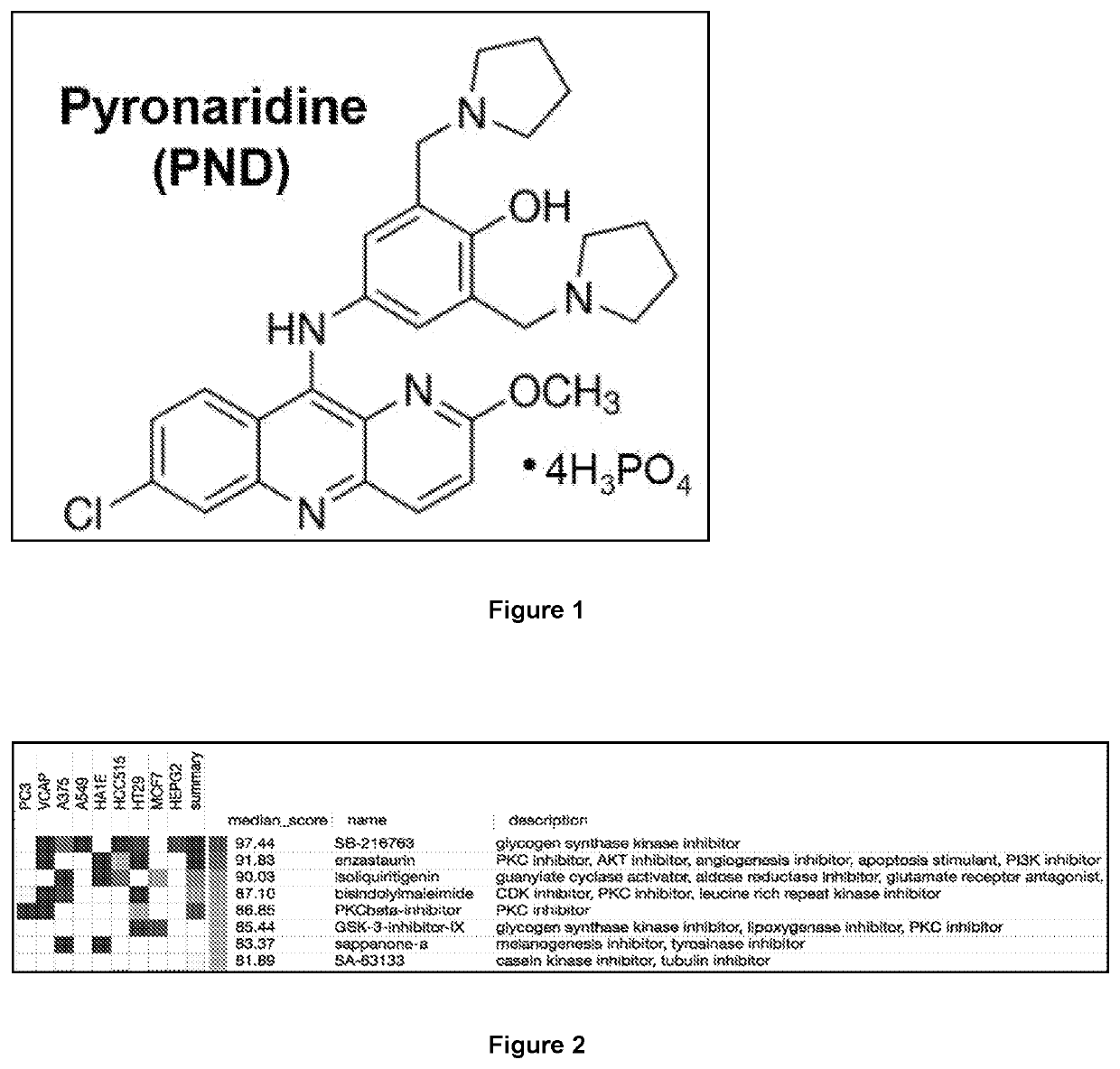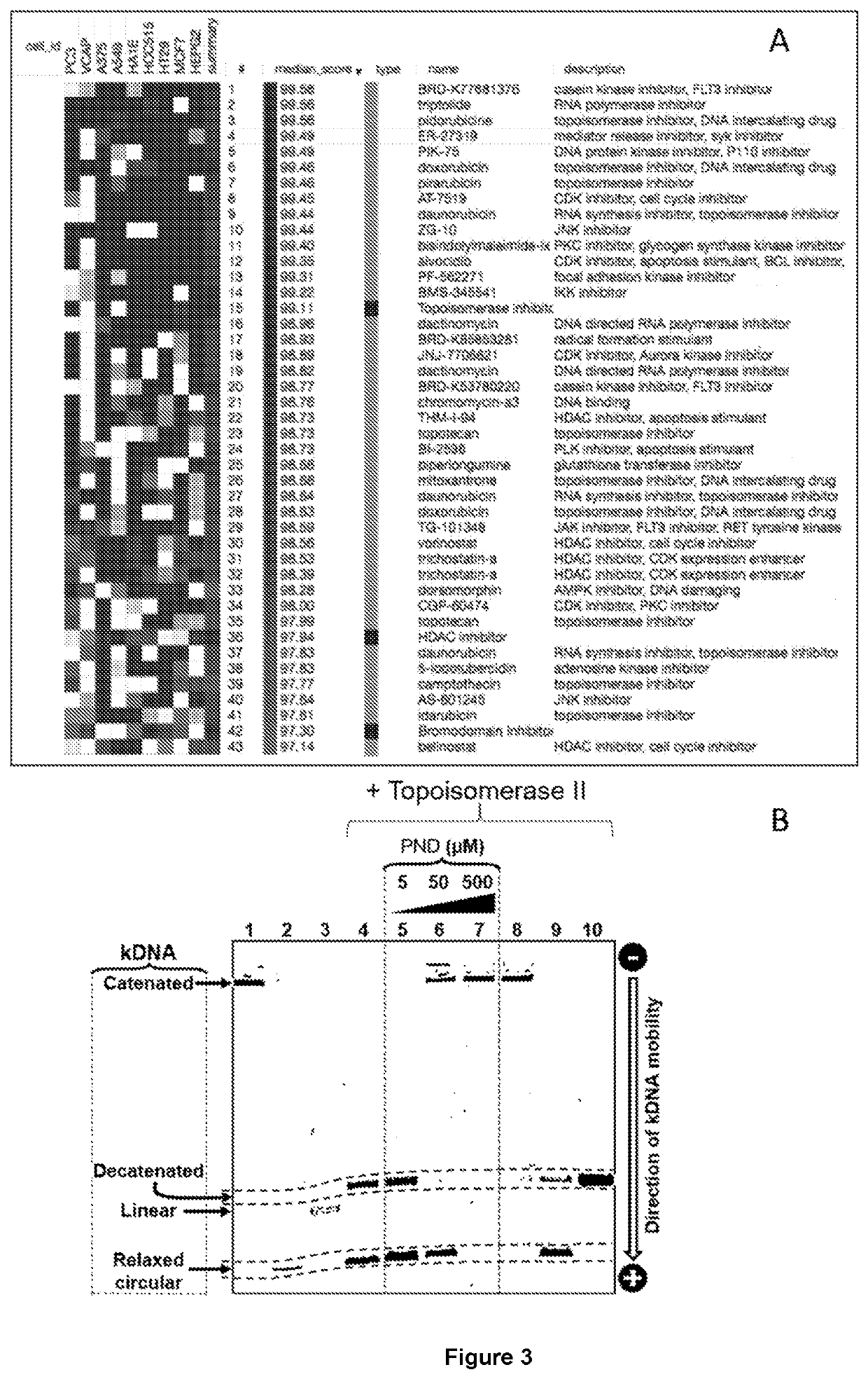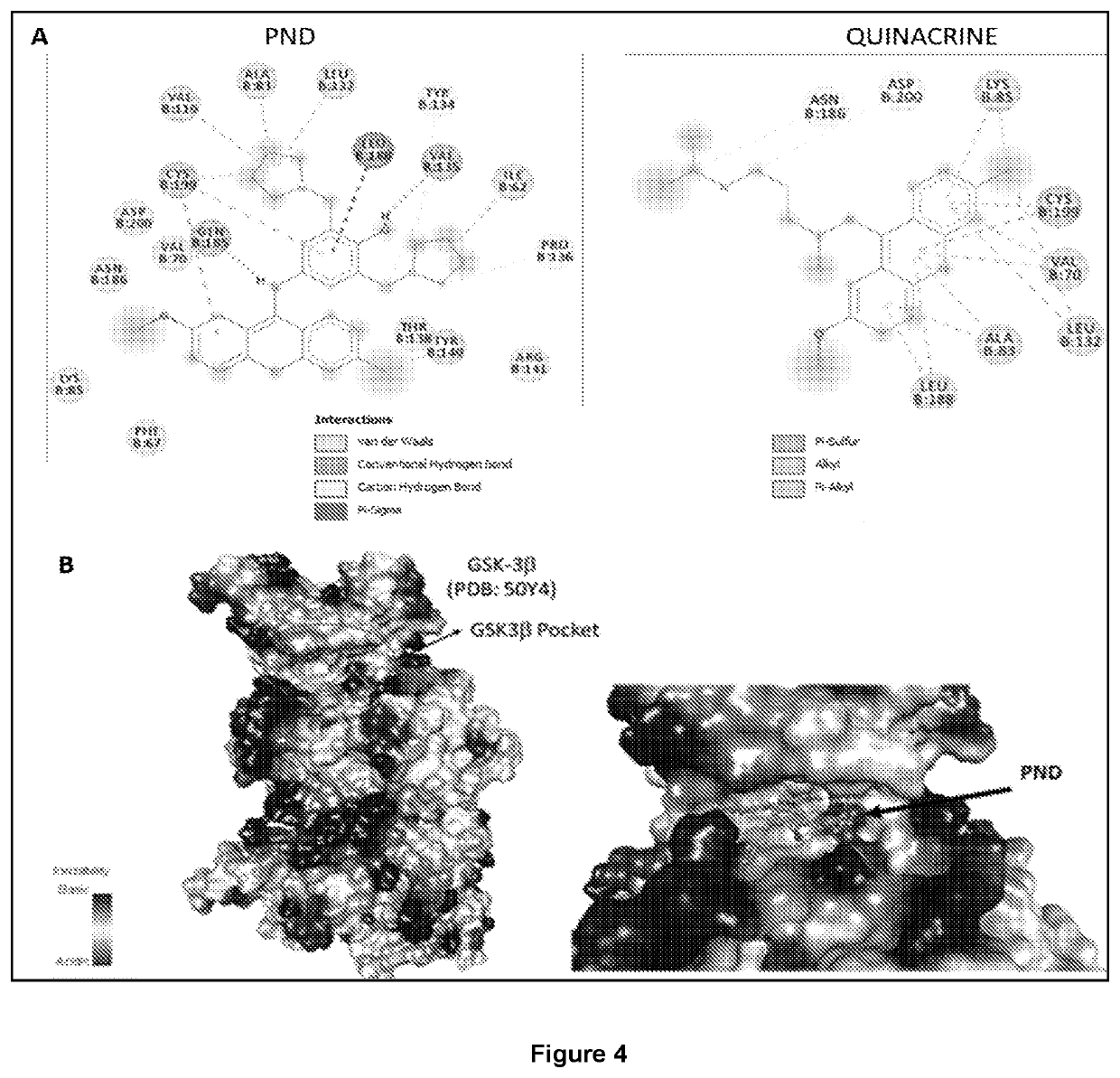Bifunctional compositions for the treatment of cancer
- Summary
- Abstract
- Description
- Claims
- Application Information
AI Technical Summary
Benefits of technology
Problems solved by technology
Method used
Image
Examples
example 2
GSK-3 Docking
[0108]The crystal structure of GSK was obtained from the Protein Data Bank (50Y4) and used to model the interactions with PND and Quinacrine (see FIG. 4A). PND is shown to interact specifically within the predicted binding pocket of GSK3β (see FIG. 4B). Docking experiments were performed using GLIDE 5.0 within the Schrodinger Software package. Molecular docking studies have revealed that PND can interact within GSK3β with a high docking score (−9.4 Kcal / mol) while SB 216763 (from Example 1; see FIG. 2) had a similar score (−9.2 Kcal / mol)). Quinacrine showed low binding scores of −7.6 Kcal / mol, indicating that the side group of PND is likely providing additional contacts within the binding pocket (see FIG. 4A) that allow it to bind better to GSK-3.
example 3
Analysis of PND Toxicity on Human Breast and Hematological Cancer Cells
[0109]The drug pyronaridine (PND) is a benzonaphthyridine derivative initially synthesized in 1970 at the Institute of Chinese Parasitic Disease and has been used in China for over 30 years for the treatment of malaria. Previous reports indicated that PND inhibits β-hematin formation promoting β-hematin-induced red blood cell lysis based on studies of Plasmodium falciparum K1 performed in vitro. In addition, PND has been previously tested in combination with doxorubicin (DOX) on multidrug-resistant (MDR) K562 / A02 and MCF-7 / ADR cancer cells and found to increase the sensitivity of cells to doxorubicin. However, it has never been determined or suggested PND had an effect by itself in the treatment of cancer.
Materials and Methods
Preparation of Pyronaridine Tetraphosphate-PND
[0110]Pyronaridine tetraphosphate (PND; 2-methoxy-7-chloro-10[3,5-bis(pyrrolidinyl-1-methyl-)4hydroxyphenyl]aminobenzyl-(b)-1,5-naphthyridine; A...
example 4
Analysis of PND Activity on Metastatic Breast Cancer in Mice
Material and Methods
[0134]12 comparable mice with metastatic breast cancer cells from the cell line MDA-MB-231 LM2-LUC4 were injected with either aqueous solution of pyronaridine (PND) or placebo (water), every day using the gavage force-feeding technique. Treatment began when tumors reached 150-300mm3 in size (i.e. Day 1).
[0135]In the PND-treated group (n=6), all 6 mice were given 160 mg / kg from Day 1 to Day 9. PND-treated mice numbers 2, 4, and 5 received 160 mg / kg for the entire study, while PND-treated mice numbers 1, 3, and 6 had the largest tumors in the group on Day 9, and had their doses increased on Day 10 to 240 mg / kg, and again on Day 13 to 320 mg / kg. The control mice (n=6) were given placebo throughout the study. The size of each tumor was measured daily. The protocol's endpoint was when a tumor reached 1500 mm3 in size, triggering the euthanization of the mouse. For the analysis, the level of significance was s...
PUM
| Property | Measurement | Unit |
|---|---|---|
| Time | aaaaa | aaaaa |
| Mass | aaaaa | aaaaa |
| Mass | aaaaa | aaaaa |
Abstract
Description
Claims
Application Information
 Login to View More
Login to View More - R&D
- Intellectual Property
- Life Sciences
- Materials
- Tech Scout
- Unparalleled Data Quality
- Higher Quality Content
- 60% Fewer Hallucinations
Browse by: Latest US Patents, China's latest patents, Technical Efficacy Thesaurus, Application Domain, Technology Topic, Popular Technical Reports.
© 2025 PatSnap. All rights reserved.Legal|Privacy policy|Modern Slavery Act Transparency Statement|Sitemap|About US| Contact US: help@patsnap.com



